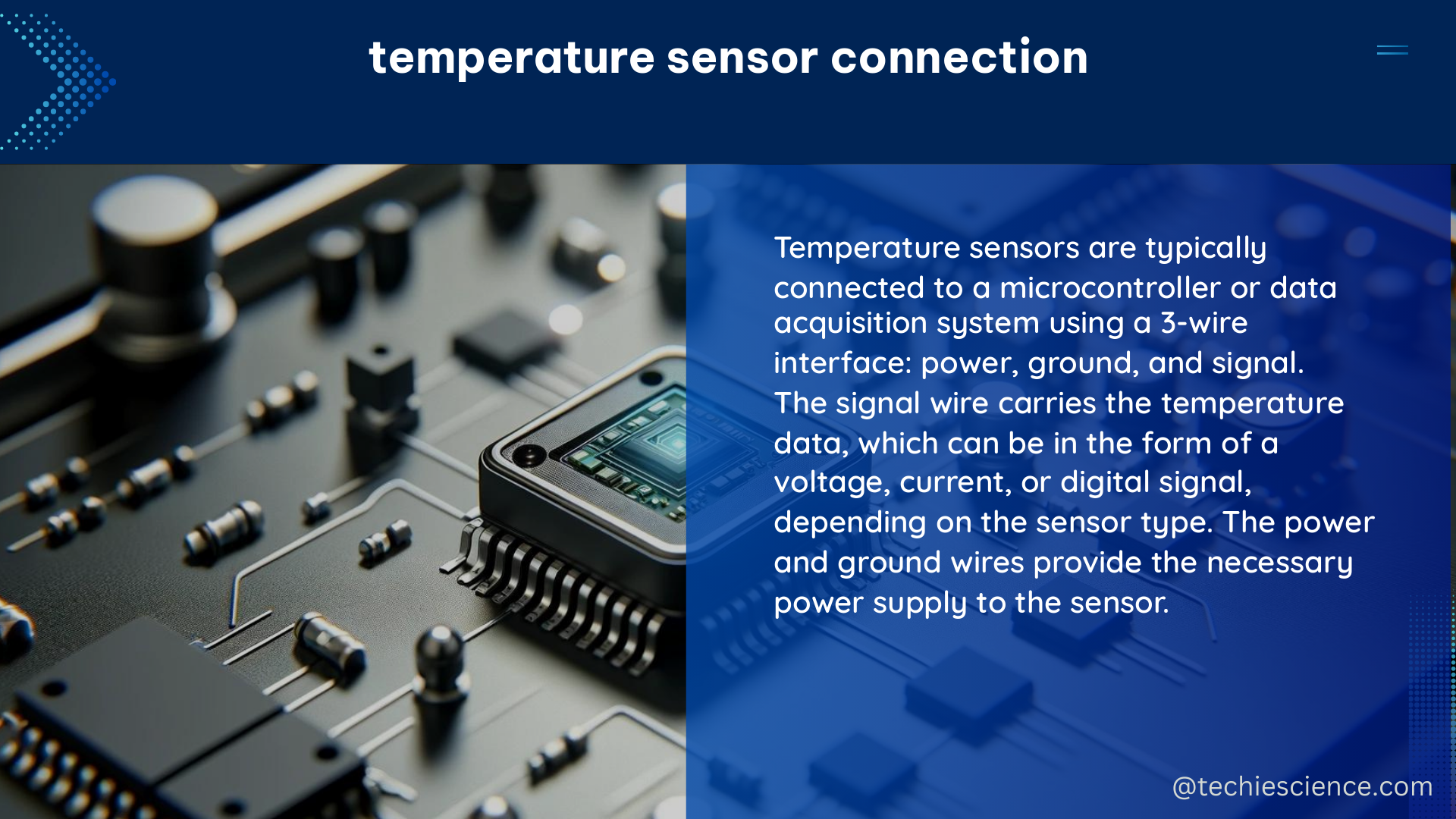Temperature sensor connections and technical specifications are crucial for accurate and reliable temperature measurement. The temperature sensor connection can be established using various methods, including window-based and event-based approaches. These approaches are designed to effectively capture and analyze the temperature signal, ensuring precise and reliable temperature readings.
Window-based Approach to Temperature Sensor Connection
The window-based approach involves comparing the mean values of the temperature signal over a window before and after a candidate peak. This method is particularly useful in identifying significant changes in temperature, such as when the sensor is removed or reattached. By analyzing the differences in the mean values, the window-based approach can effectively detect and classify temperature events, providing valuable insights into the sensor’s behavior and the environmental conditions.
Event-based Approach to Temperature Sensor Connection

The event-based approach, on the other hand, focuses on identifying specific episodes in the temperature signal that are characteristic of the class one wants to identify. In the case of temperature signals, a suitable event for classification would be the temperature difference between consecutive data points. Larger changes in temperature, such as when the sensor is removed (temperature decreases) or reattached (temperature increases), can be highlighted by prominent peaks in the derivative of the temperature signal, distinguishing them from smaller variations caused by environmental temperature fluctuations.
Technical Specifications of Temperature Sensors
The technical specifications of temperature sensors can vary depending on the manufacturer and model. For instance, the LM35 temperature sensor has a linear scale factor of 10 mV/°C and can accurately predict temperatures in the range of -55°C to 150°C. When using an Arduino board, it is essential to ensure that the output is predicted in a common unit, such as the Celsius scale, and that the board has an accuracy range of 0.5°C or better to minimize error and maximize accuracy.
Response Time of Temperature Sensors
In addition to accuracy, temperature sensor connections should consider the sensor’s response time, which is the time it takes for the sensor to reach a steady state after a change in temperature. The response time reported in the sensor datasheet should be taken into account when computing the average temperature values, as it can have a significant impact on the sensor’s performance and the reliability of the temperature measurements.
Sensitivity of Temperature Sensors
Furthermore, temperature sensor connections should consider the sensor’s sensitivity, which is the minimum change in temperature that the sensor can detect. The sensitivity of the temperature sensor can affect the detection and quantification of temperature sensor drift, which is typically quantified by analyzing the prediction residuals. However, these methods may not be robust to outliers and can be influenced by seasonal biases, requiring careful consideration and mitigation strategies.
Detecting and Quantifying Temperature Sensor Drift
Temperature sensor drift is a common challenge that can affect the accuracy and reliability of temperature measurements over time. Detecting and quantifying temperature sensor drift is crucial for maintaining the integrity of the temperature data. Techniques such as probabilistic neural networks have been developed to effectively detect and quantify temperature sensor drift, providing a more robust and reliable approach to temperature monitoring and control.
Calibration and Maintenance of Temperature Sensors
Proper calibration and maintenance of temperature sensors are essential for ensuring accurate and reliable temperature measurements. Regular calibration checks, as recommended by the manufacturer, can help identify and correct any drift or inaccuracies in the sensor’s performance. Additionally, proper handling and storage of the temperature sensors, as well as adherence to the manufacturer’s guidelines, can contribute to the longevity and reliability of the sensor.
Conclusion
Temperature sensor connections and technical specifications are critical for accurate and reliable temperature measurement. By understanding the window-based and event-based approaches, as well as the technical specifications, response time, sensitivity, and drift characteristics of temperature sensors, users can ensure that their temperature sensor connections are optimized for precise and reliable temperature monitoring and control. Proper calibration, maintenance, and adherence to manufacturer guidelines are also essential for maintaining the integrity of temperature data over time.
References:
- Putting Temperature into the Equation: Development and Validation of Algorithms for Non-Wear Detection Using a Temperature Sensor in a Waist-Worn Accelerometer, https://www.ncbi.nlm.nih.gov/pmc/articles/PMC8838557/
- Detection and quantification of temperature sensor drift using probabilistic neural networks, https://www.sciencedirect.com/science/article/pii/S0957417422019029
- Arduino – Temperature Sensor, https://www.geeksforgeeks.org/arduino-temperature-sensor/

The lambdageeks.com Core SME Team is a group of experienced subject matter experts from diverse scientific and technical fields including Physics, Chemistry, Technology,Electronics & Electrical Engineering, Automotive, Mechanical Engineering. Our team collaborates to create high-quality, well-researched articles on a wide range of science and technology topics for the lambdageeks.com website.
All Our Senior SME are having more than 7 Years of experience in the respective fields . They are either Working Industry Professionals or assocaited With different Universities. Refer Our Authors Page to get to know About our Core SMEs.